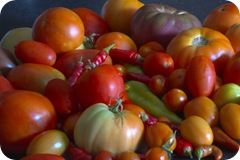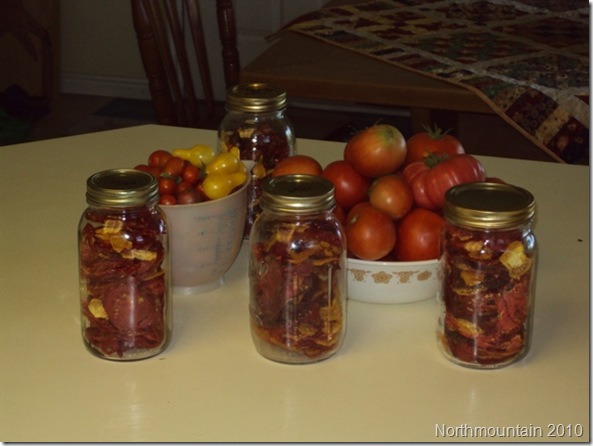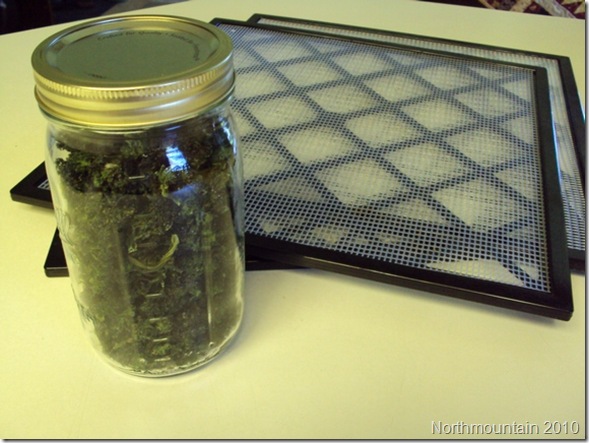It is a typical harvest season. Walking into our home makes your mouth water. The smells of sauces, chilies, catsup, juices and other delights seems to permeate everything.
The kitchen is always warm this time of the year because the burners on the range top rarely cool. In fact, several of the burners had to be replaced recently due to the constant use.
 Step through the door into the garage and the smell is just as intense. Our dehydrator does turn off from time to time, long enough to clean it between loadings but it is always ready to ingest another full load.
Step through the door into the garage and the smell is just as intense. Our dehydrator does turn off from time to time, long enough to clean it between loadings but it is always ready to ingest another full load.
We put it in on my workbench this time of year so the heat from the dehydration process is shared in another location rather than adding to the heat in the kitchen.
Of course our 3-burner propane stove adds to the available heat surface area as well. It cooks the large loads, the messy loads, the annual family canning Saturdays. That means that the garage is warm even when it is cold out side. We lift the doors half way, then fire that baby up to create shirt sleeve temperatures for our family crew as we work the preparation line.
I continue to be concerned about my seeming addiction to the dehydrated fruits and vegetables though. I can’t walk by them without reaching for a handful of tomato, strawberry, gooseberry, raspberry and all of the other ‘chips’ that were dehydrated this year. Hopefully, there will be some left for the rest of the family during the coming winter and spring months.
Our neighbors seem to drop by to talk a lot this time of the year too. At first I thought the ladies were just addicted to my wife’s chocolate zucchini cake, but the supply of dehydrated goodies drops precipitously during their visits too. I don’t blame them. You can’t resist either of them. (See a similar cake recipe here.)
We are often asked how much shrinkage occurs during the dehydration process. The answer is that it varies from variety to variety based in the solid mass of the item when it is fresh. Broccoli flowerets shrink at a constant 60% + –. Tomatoes shrink about 70% when all of the water is removed.
The photo below shows one-third bushel of tomatoes that have been dehydrated. The dried result was about three quarts of product. I say about, because of my heretofore described snacking addiction which tends to inhibit an accurate one-to-one measurement.
These photos show three trays of broccoli after dehydration. The trays were completely full prior to the dehydration process. The resultant dehydrated product filled one quart.
So far, our vacuum sealer keeps the bottles sealed and vacuum packed as long as we use new canning lids on clean bottles with smooth lips.
The rehydrated produce tastes fantastic in our meals. We are guessing that our sons and sons-in-laws may reap the harvest in pears, tomatoes, apples and other goodies when Santa comes to visit them this year. We’ll see if they have the courage to break the seal on the ‘beautiful’ contents or will use them for show-and-tell in their emergency preparedness assignments and as decorations on their storage shelves.
If you haven’t dehydrated the produce from your garden before, give it a try this year. Remember this selling point – dehydrated pineapple is a fantastic snack and expensive by the slice. Dehydrating it at home is much less expensive. If the men in the family still aren’t convinced about the benefits of dehydration, tell them of the fantastic jerky they can make in your dehydrator at a greatly reduced price compared to the stuff sold at your local gas and goodies store. If they still aren’t convinced, borrow a dehydrator for a couple of days, set it on the kitchen counter and then dehydrate a few trays of strawberries. The smell will make the sale.





